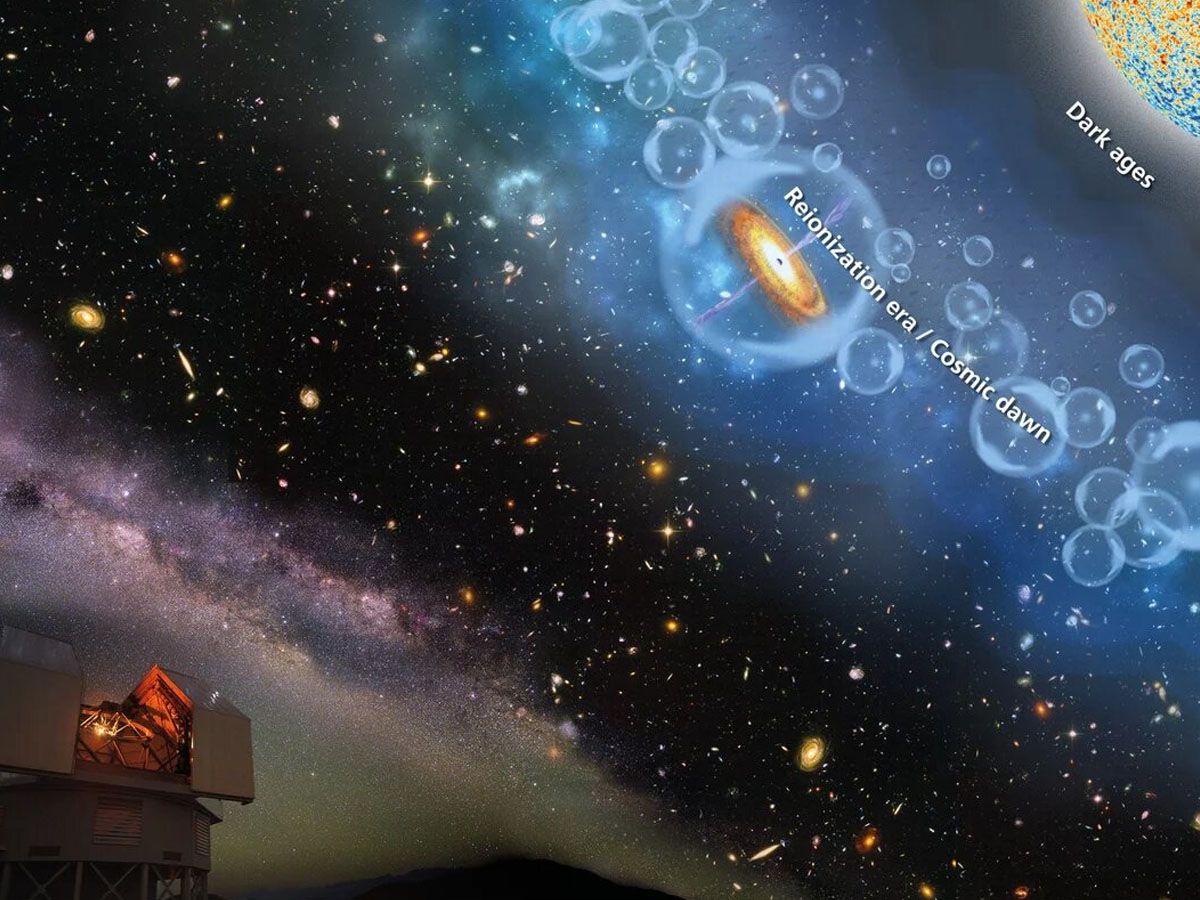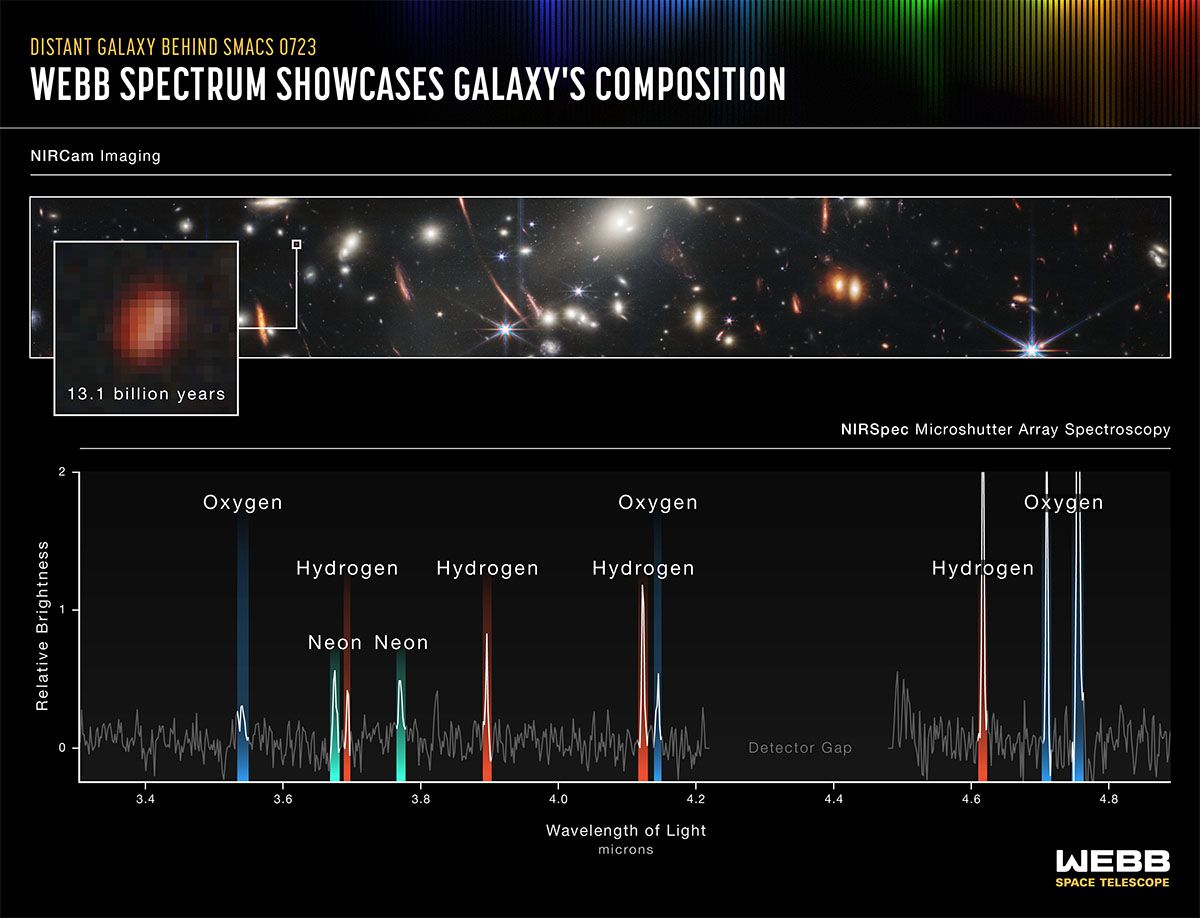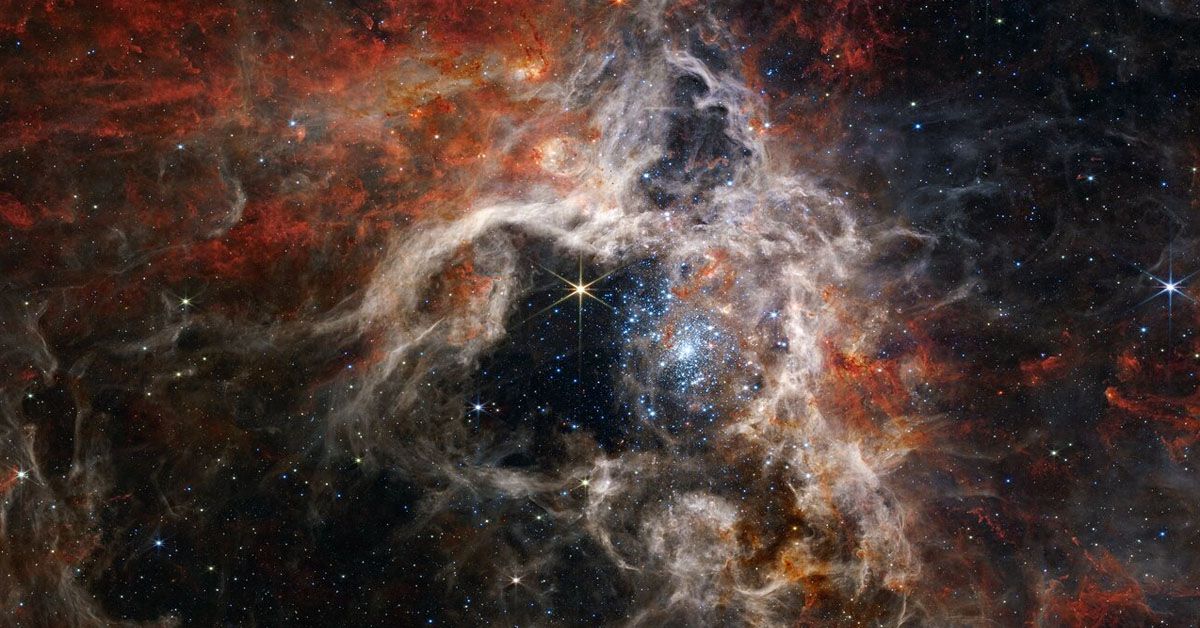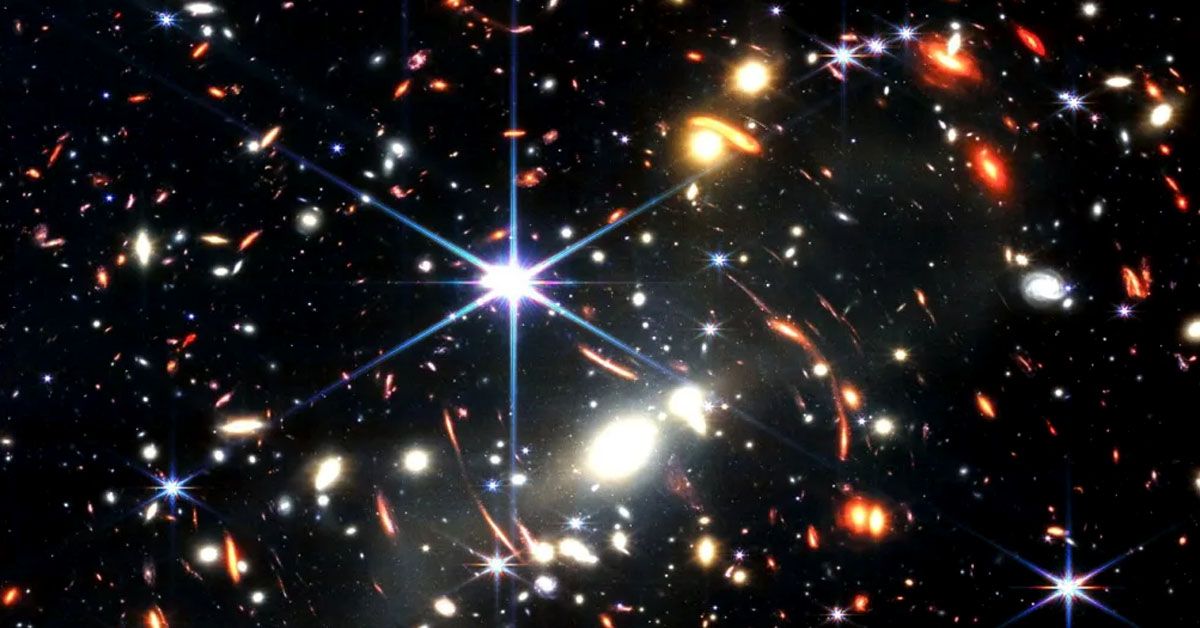Webb's lenses have just captured an image, not of our familiar night sky, but of an unimaginable 45,000 galaxies deep in the cosmos. But these aren't any galaxies, they hail from a time when the universe was just a baby, the Epoch of Reionization.
This era was a transformative period when the first stars flickered into existence, lighting up the universe's murky canvas.
But how did this remarkable transformation occur?
And what secrets are the galaxies from this epoch still whispering to us today?
An Unprecedented Infrared Capture of the GOODS-S Field
Just recently, Webb focused its gaze on a specific patch of space called the GOODS-S field. What it found was nothing short of phenomenal.
Through its advanced infrared vision, Webb was able to capture an image teeming with galaxies, over 45,000 to be exact!
Why is this a big deal?
Well, seeing so many galaxies at once gives us a kind of "galactic census." This snapshot can tell us a lot about how galaxies are distributed in space, how many there might be, and what different types of galaxies exist.

But Webb's incredible feat isn't just about the sheer number of galaxies. It's also about when these galaxies existed.
The captured image takes us back to a time we call the Epoch of Reionization. This might sound like something out of a science fiction movie, but it's a real period in our universe's history, a time when the very first stars and galaxies were just starting to form.
The Universe's First Transformation: From Opaque to Clear Cosmos
In the early stages of the universe, things looked very different from what we see when we gaze up at the night sky today. This early universe was chock-full of hydrogen atoms.
Now, hydrogen might be the simplest and lightest element, but put enough of it together, and it makes a pretty dense fog. This fog was so thick that light couldn't travel through it, hence, the universe was opaque.
So, how did we end up with the beautiful, star-studded cosmos we know today?
The answer lies in a process called reionization. As gravity pulled hydrogen atoms together, they started forming denser regions. In these regions, the hydrogen atoms got compressed under extreme pressure and temperature, giving birth to the first stars and galaxies.
When these massive stars blazed into life, they released a flood of high-energy light, so much light that it started stripping electrons off the surrounding hydrogen atoms, a process known as ionization.
As more and more hydrogen got ionized, the fog started clearing up, and light could finally travel across the cosmos. The birth of stars and galaxies marked the universe's epic transformation from an opaque fog into a clear cosmos.

You might think that images of the early universe would look very different from what we see today. Surprisingly, some things aren't that different.
The Webb telescope's image of the GOODS-S field shows galaxies as they were when the universe was about 600 million years old.
Now, that might sound ancient, but remember that the universe is nearly 14 billion years old! So, we're seeing galaxies in their cosmic "childhood".
This age is fascinating for astronomers because it was during this time that many of the universe's first galaxies were undergoing rapid formation and evolution.
The light we're seeing from these galaxies has been traveling for so long that it's like a time machine, letting us observe events that happened billions of years ago. As such, these images provide vital clues about how galaxies formed and evolved over the universe's lifetime.
Comparing these early galaxies to those in the modern universe, we start seeing intriguing differences and similarities. Understanding these will help us piece together the cosmic puzzle of how the universe we see today came to be.
Star Birth in Early Galaxies: Webb's Intriguing Observations
One standout discovery by Webb revolves around the formation of stars in these early galaxies. Now, stars don't just pop into existence.
They form from collapsing clouds of gas and dust, and this process releases a lot of energy. The stronger the energy release, the more intense the star formation.
So, how does Webb know this is happening?
It looks for signs, specifically something called emission line signatures. These are unique patterns of light that occur when atoms are excited, for example, during star formation.

These signatures are like the universe's version of fingerprints. They are unique and can tell us what elements are present, how many of them there are, and what processes are happening.
From the data Webb collected, these early galaxies showed strong emission line signatures, evidence of intense star formation. This starburst activity suggests that these galaxies were experiencing a period of rapid growth and transformation.
It's as if Webb has caught these galaxies in the act of "growing up."
Remember Those First Stars We Talked About, the Ones That Caused the Reionization?
They were not your ordinary stars. They were massive, much bigger than our Sun and many other stars we see today.
These giant stars had an essential role in changing the universe. Their enormous energy output was enough to ionize the surrounding gas, stripping electrons off hydrogen atoms.

This ionizing effect created bubbles around the stars where light could travel freely. As more stars formed and these bubbles grew and overlapped, the universe gradually became transparent to light.
In this way, these early stars played a vital role in lifting the cosmic fog and lighting up the universe.
Webb's Infrared Vision: A Key to Penetrating the Cosmic Gas
Webb's discoveries wouldn't be possible without its ability to see in a special kind of light, infrared. Unlike our eyes, which see visible light, Webb's detectors are tuned to infrared wavelengths.
So, why is infrared so important for exploring the early universe?
To answer that, imagine trying to look through a dusty window. You wouldn't see much, right?
Similarly, much of the universe is filled with cosmic dust and gas that blocks visible light. But infrared light has longer wavelengths that can pass through this cosmic dust and gas.

This capability allows Webb to detect the faint light of distant galaxies, including those from the universe's early days. It's like having a superpower that lets us peek through cosmic dust clouds and witness events from billions of years ago!
Webb's advanced infrared capabilities have opened a new window into the universe, allowing us to explore realms unseen and make groundbreaking discoveries about the birth and evolution of stars and galaxies.
Isn't it incredible what we can learn when we see the universe in a different light?
Sources: nasa.gov













